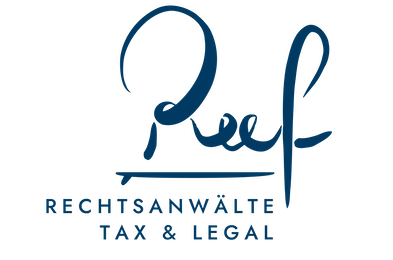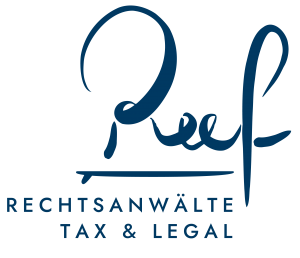SUPPLY CHAIN MANAGEMENT
OPEN MINDED
SUPPLY CHAIN MANAGEMENT - A CRISIS ISSUE?
The supply chain in companies always receives special attention in times of crisis. Companies should keep a permanent eye on their relationship with their suppliers and constantly evaluate and, where necessary, adapt their purchasing and logistics - the supply chain.
The deceptive thing about the supply chain is its apparent resilience in economically healthy times.
Then you can safely focus on individual aspects such as cost prices or short-term product availability under ideal conditions. The longer economically stable phases last, the more a holistic risk assessment of the supply chain recedes into the background. Decision-makers are then often heard to say, "It's going well".
In crisis situations, be it company-related or macroeconomic, the true resilience of the supply chain suddenly becomes apparent. If individual suppliers fail, transport routes no longer function or, in extreme cases, countries collapse, the supply chain breaks down or severe bottlenecks occur.
Through supply chain management that takes a balanced view of risks and not just individual success factors, companies achieve an optimal profile in the triad
- Costs
- Functionality/customer benefit
- Risks
and build a stable, resilient supply chain that gives them a clear competitive advantage.
Supply chains today are in most cases organised internationally and partly globally. Raw materials, intermediate products and finished goods are often sent halfway around the world or even all over the world. This is due to relatively low transport costs, local (favourable) cost structures, but also to sales markets that demand or favour local finishing but do not have a biotope of suppliers. This cannot be changed overnight.
So building resilient supply chains takes time, in our experience up to two years including developing suppliers to the desired level.
IThe Supply Chain Task Force
In the event of an acute crisis, but also in routine business, we propose a multifunctional task force that is equipped with responsibility and a clearly defined decision-making authority and that is agile
- i.e. can work quickly and unbureaucratically. Then a distinction must be made between the normal mode and the crisis mode: This task force can introduce new, temporary rules in the event of a crisis and implement them immediately. Although quality or safety must not suffer in any way, it must be possible to make decisions about core criteria such as costs, warehousing and the connection of alternative suppliers without possibly having to follow traditional, lengthy paths.
The task force should seek advice from manufacturing companies - the backbone of the German economy.
- interdisciplinary from the functions of engineering, purchasing, logistics, production and finance. These teams will work together on a daily basis and, depending on the size of the company, may also be globally networked. Whether they work together in the office (control centre) or from the home office should not play a role here.
This is already where the difficulties begin for many smaller companies. Often the right tools are not available to let employees work and interact digitally. Here we mean structural or data technology issues rather than labour law or data protection issues, which of course want to be looked at very carefully.
In general, the formation of interdisciplinary teams in this composition, even with decision-making authority, is a challenge. The task here is to shake up an organisation and, above all, to sensitise the decision-makers to risks. This must be done by qualified managers and employees with the appropriate professional authority in the risk areas. A trained organisation will understand this risk and error culture positively and react elastically. Moreover, if digital communication tools are standard in an organisation, rapid collaboration is possible regardless of the location of individual team members, and crises can be intercepted just as quickly.
Characteristics of a resilient supply chain
- Very long supply chains that are reliable in stable times are secured by shorter supply chains as an alternative (in 2019 alone, the German economy procured goods worth around €106 billion from China, according to the Federal Ministry of Economics and Technology).
- Turning away from so-called single sourcing - even for extremely demanding products or pure mass products (commodities), at least one alternative supplier is established at a second location
- The pure low-cost strategy is being replaced by a best-cost strategy that also includes other factors such as proximity, reliability, etc.
- Just-in-sequence" thinking with minimised inventory is replaced by a warehouse strategy adapted to risk scenarios (self and 3rd parties)
- For particularly critical parts or pre-products, the return close to home or, in the case of new products, the direct location of production at the main site is considered.
- The stable availability of products in the desired functionality and quality is an essential component of customer benefit and is a) aggressively priced or b) explicitly no longer guaranteed in the case of required price reductions.
- Software, databases and Kl systems are increasingly used to get an overview of procurement markets and bottlenecks
- An interdisciplinary task force systematically controls the procurement process, it identifies and names risks, keeps scenarios on hand and intervenes immediately in the event of a crisis
- Both factors (IT and task force) can map reality in real time via so-called digital twins and model, evaluate and transfer the impact of crises or disruptions into blueprints.
- Even without a crisis situation, the interdisciplinary task force regularly exchanges knowledge and establishes agile knowledge management as well as systematic knowledge controlling on all aspects of the supply chain
Tax factors of supply chain transformation
- Relocations of production within the EU have different implications than those between the EU or third countries - here the individual case must be examined carefully
- The same applies to the relocation of procurements via local third-party suppliers who deliver either to the local own subsidiary or to the German parent company, for instance
- All transfers between countries can have an impact on transfer prices and thus an impact on the taxes of both the national company and the controlling company (e.g. holding company)
- Transfer prices must be well documented and stand up to third party comparison, otherwise there is a risk of tax disadvantages
- In the case of procurement and production relocations, profits may be shifted - here there is the risk of exit taxation in the respective countries, which should not be underestimated
- Reorganisations of the supply chain can shake up the structure of the value contributions of individual companies or functions - in this case, the restructuring of the value contributions aims less at cash flows than at the gain in value (profit potential), which in turn can involve the setting of new transfer prices
- In this scenario, capitalisation interest on reallocated profits and its tax implications along with structuring options must also be considered
- Relocations of any kind outlined here entail a special duty of documentation; even in the case of very dynamic globally distributed groups of companies, these are by no means routine procedures in day-to-day business, but extraordinary business transactions within the meaning of § 90 para. 3 AO - here, absolute diligence is advisable.
Legal factors of supply chain transformation
- Especially in supply chains, compliance with national and local laws must be ensured - what is permitted and prohibited can vary greatly even within the EU.
- Well-coordinated contractual regulations are needed: For supply chains with reference to third countries outside the EU, but also within the EU, it must be clarified which law applies and which court and arbitration institution is responsible.
- It must be clarified whether judgments or arbitral awards can be legally and factually enforced in the respective country. In Russia, for example, judgments of European courts cannot be enforced due to lack of recognition, but arbitral awards can. Tip: Arbitral tribunals are usually internationally recognised
- It must be checked for all clauses, especially GTCs, whether they are valid in the other countries. In the Netherlands, for example, extended reservations of title are usually invalid.
- For clauses on force majeure and crises, in addition to legally secure validity, it must be ensured which formal requirements apply, such as, for example, in China a "force majeure certificate", which is issued by the China Council fbr the Promotion of International Trade (CCPIT) at the request of the company enterprise based in China.
- Crisis situations require special precautions, such as a force majeure clause, which must also be applied in the third country; these clauses must then contain as many reasons for force majeure as possible, i.e. not only the known earthquake event but also a pandemic, for example.
- The UN Convention on Contracts for the International Sale of Goods should be agreed and not excluded, as this applies at least in the signatory states and there is case law on this and thus a certain legal certainty (e.g. Art. 79 CISG).
- The respective national export conditions must be checked, as well as the customs and import conditions: Many products have to be admitted to the European market first, if customs seize them
- It should be carefully checked which international terms of delivery (INCOTERMS) have been effectively agreed upon








